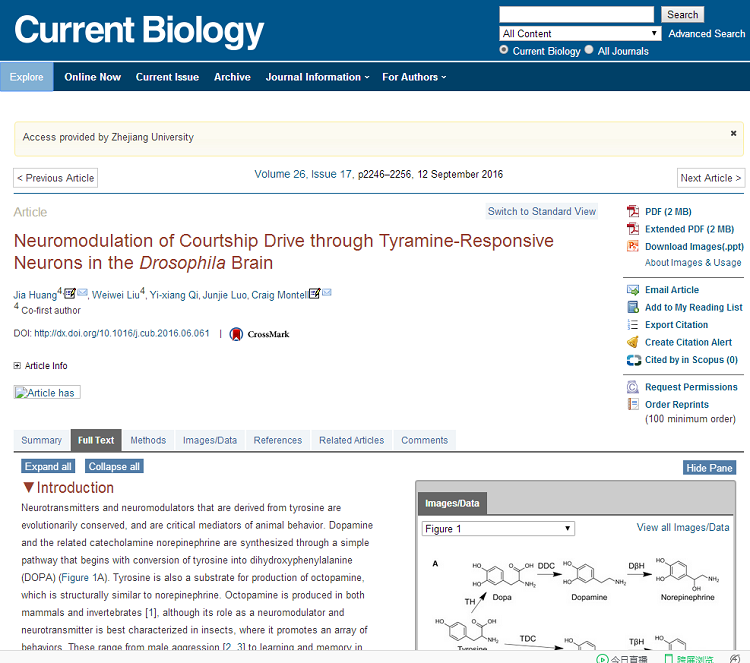Neurotransmitters and neuromodulators that are derived from tyrosine are evolutionarily conserved, and are critical mediators of animal behavior. Currently the function of tyramine is largely enigmatic, although related biogenic amines, such as dopamine, Dopa, norepinephrine and octopamine have been exhaustively studied. Thousands of publications document their contributions to the regulation of animal behaviors ranging from motivation control to alertness, learning, feeding and many others. However, the role of tyramine is virtually ignored, even though it is detected in the brains of every animal that has been probed for expression of this catecholamine. The reason that few studies focus on tyramine is that most investigators assume that tyramine is nothing more than a biosynthetic intermediate for octopamine.
In the recent issue of Current Biology (2016, 26: 2246-2256), Dr. Jia Huang from Institute of Insect Sciences reported a striking phenotype resulting from knockout of a Drosophila receptor that is specifically activated by tyramine (TyrR). They found that the mutant males displayed a profound increase in male-male courtship, but no change in gender preference. They found that TyrR was expressed and functioned in a set of tyramine-responsive neurons in the Drosophila brain called the inferior posterior slope (IPS). Genetic hyperactivation of IPS neurons induced a significant elevation in male-male courtship, similar to the mutant males. Conversely, inactivation of these neurons decreased male-female courtship. They concluded that basal IPS activity is required to permit sufficient levels of sexual drive for male-female courtship. In addition, through activation of TyrR, they suggest that tyramine serves as an inhibitory neuromodulator to reduce sexual drive. This work represents a breakthrough since it describes the first demonstration that tyramine serves as a neuromodulator in Drosophila and TyrR could be a potential target to control pests through chemical or biological approaches.
